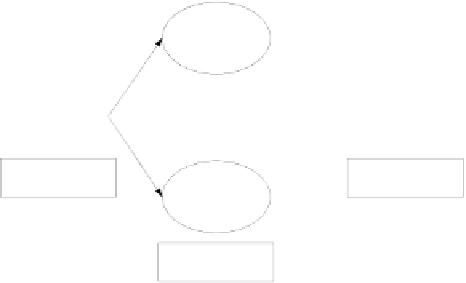Databases Reference
In-Depth Information
T
2
: User U
1
{U
1
, -}
{U
1
, -}
T
1
: Submit
Paper
T
2
: Review
paper
T
3
: Issue
Check
{U
1
, -}
Authorized Role:
Researcher
Authorized Role:
Reviewer
T
2
: Review
paper
Authorized Role:
Reviewer
Fig. 3.
Example of Task Assignment Planning
assessing potential assignments allows the workflow to proceed in run-time at
a quicker pace with a guarantee of the ability to assign all tasks to individuals.
4.2 Constraint Consistency and Enforcement
The workflow authorization model in [11] includes static checking of autho-
rization consistency as a first step. The overall process for checking constraints
across workflow instances and for assigning users to tasks is given as a four
step process [28]:
Static Enhancement of the Constraint Base when the workflow is defined
- In this phase, constraints that can be derived from other constraints are
created and overlapping conditions are rectified.
•
Static Inconsistency Identification and Analysis - In this step, constraints
and conditions are checked to ensure that different rules do not result in
a user or role being authorized and denied from performed a task. This
step is performed both when a workflow is defined and when new rules are
added.
•
Run-time Inconsistency Identification and Analysis - This step is per-
formed whenever a task instance is initiated if there are constraint condi-
tions met by the parameters of the instance.
•
•
Run-time updating of the Constraint Base - Performed whenever assign-
ments are made which constrain assignments for future instances of the
workflow.
Step 1 is only performed when a workflow is defined. When a workflow
instance is begun, step 3 is initiated. Steps 2 through 4 are repeated whenever
new rules are added to the constraint base because of what occurred during a
workflow instance. Figure 4 shows a schematic of the process and an example
is given below.




